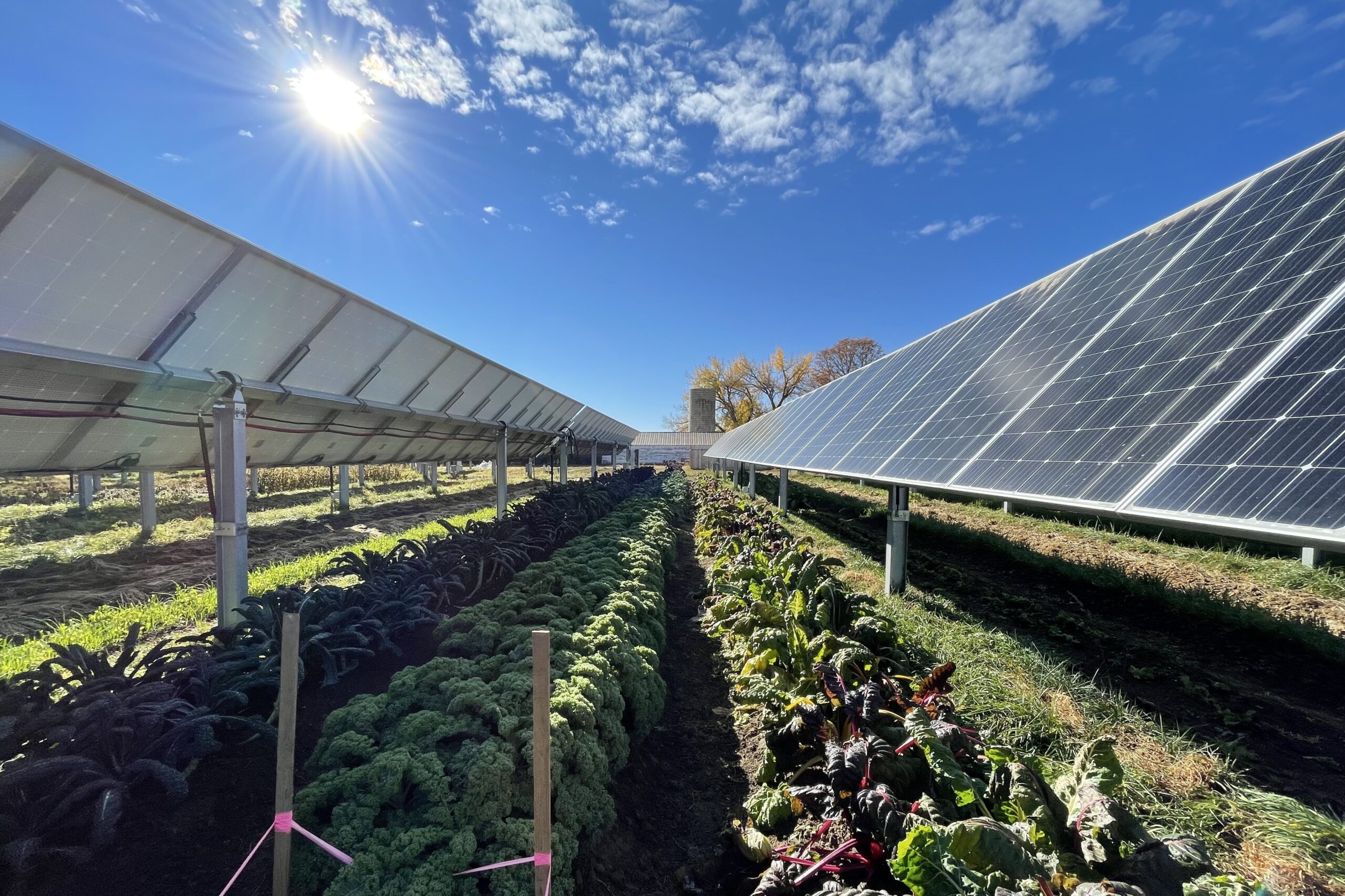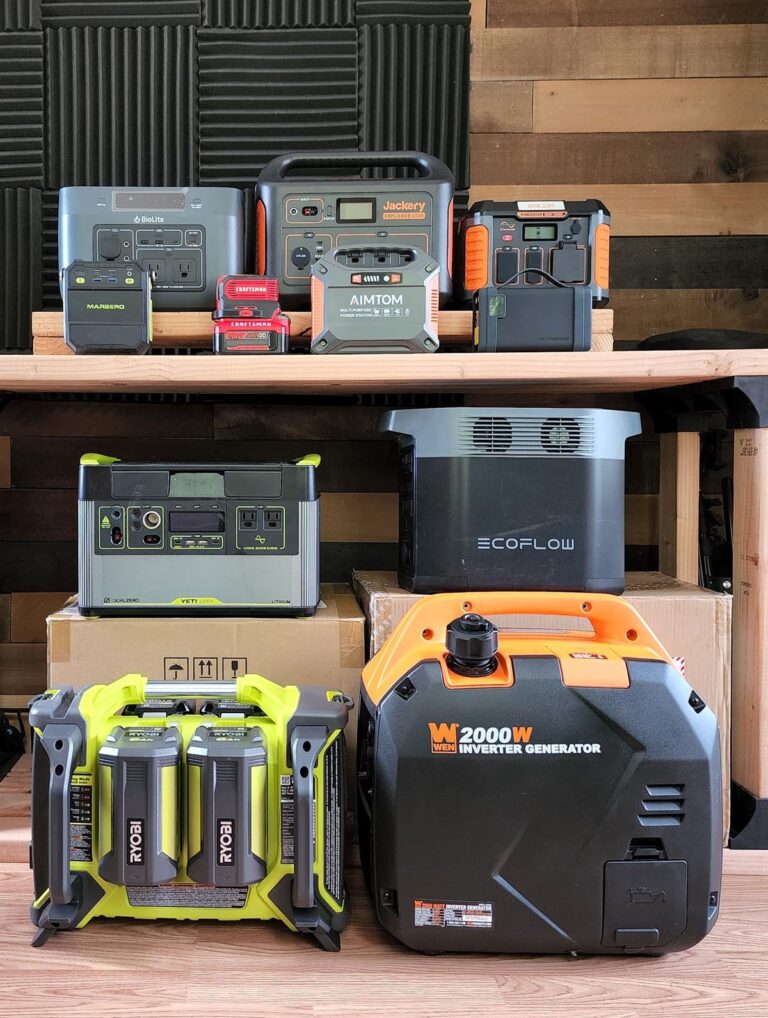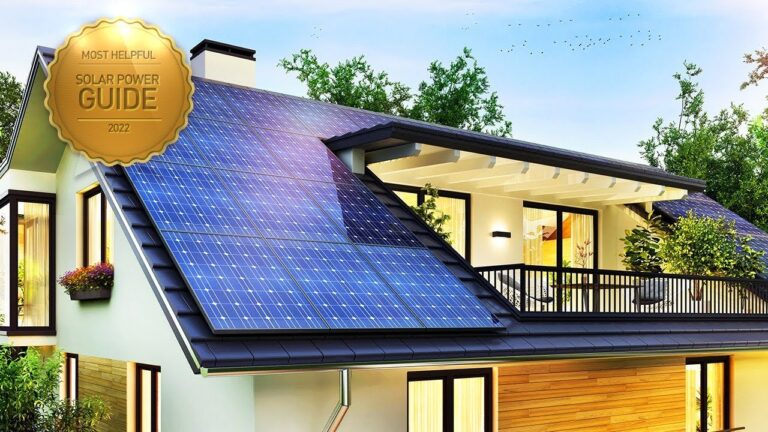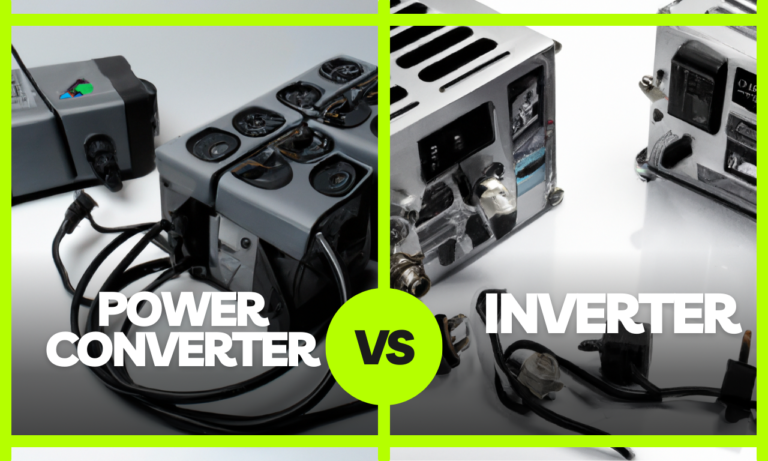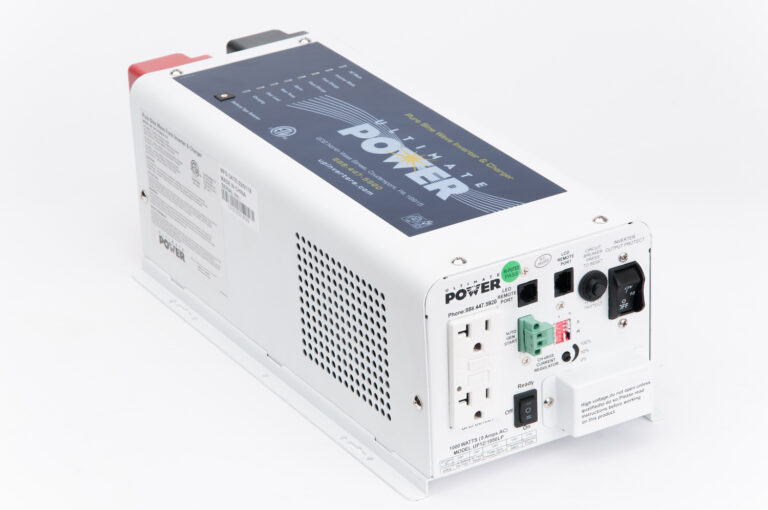Elevating Solar Efficiency: Exploring the Benefits of Micro Inverters for Solar Panels
Micro inverters offer benefits such as simplified installation, reduced costs, increased durability, and longer lifespan for solar panels. Installing micro inverters cut installation costs by approximately 15%.
Additionally, micro inverters have a similar maximum efficiency of 95% compared to central inverters. Another advantage is that micro inverters are safer as they convert electricity to AC at the panel level. These benefits make micro inverters a favorable choice for solar installations.
Introduction To Micro Inverters
Discover the advantages of using micro inverters for solar panels. These inverters simplify installation, reduce costs, and offer better durability and lifespan compared to traditional inverters. Elevate your solar efficiency with micro inverters.
What Are Micro Inverters?
- Micro inverters are small devices that are attached to each individual solar panel in a solar power system.
- They are responsible for converting the DC (direct current) electricity generated by the solar panels into AC (alternating current).
- Unlike traditional string inverters, which are connected to multiple panels, micro inverters operate independently, providing greater flexibility and efficiency.
How Do Micro Inverters Work?
- Micro inverters are installed on the back of each solar panel in a solar power system.
- They convert the DC electricity generated by the solar panels into AC electricity at the panel level.
- Each micro inverter works independently, allowing for maximum energy production even if one panel is shaded or experiencing a decrease in performance.
- The AC electricity produced by the micro inverters is then sent to the main electrical panel of the building for use.
Key Features Of Micro Inverters:
- Panel-level optimization: Micro inverters optimize the performance of each individual solar panel, ensuring maximum energy production.
- Enhanced safety: Micro inverters operate at low voltage levels, minimizing the risk of electrical shock.
- Greater flexibility: Micro inverters allow for easy panel-level monitoring and maintenance.
- Improved efficiency: Micro inverters can increase the overall efficiency of a solar power system by up to 25% compared to traditional string inverters.
- Enhanced performance in shading or mismatched panels: Micro inverters mitigate the impact of shading or mismatched panels, allowing for better overall system performance.
Micro inverters play a significant role in enhancing the efficiency and performance of solar power systems. By installing micro inverters, solar installations can achieve higher energy production, better system monitoring, and increased safety. These devices offer numerous benefits, including panel-level optimization, enhanced safety, greater flexibility, improved efficiency, and better performance in shading or mismatched conditions.
With their ability to convert DC electricity to AC at the panel level, micro inverters are a valuable addition to any solar power system.
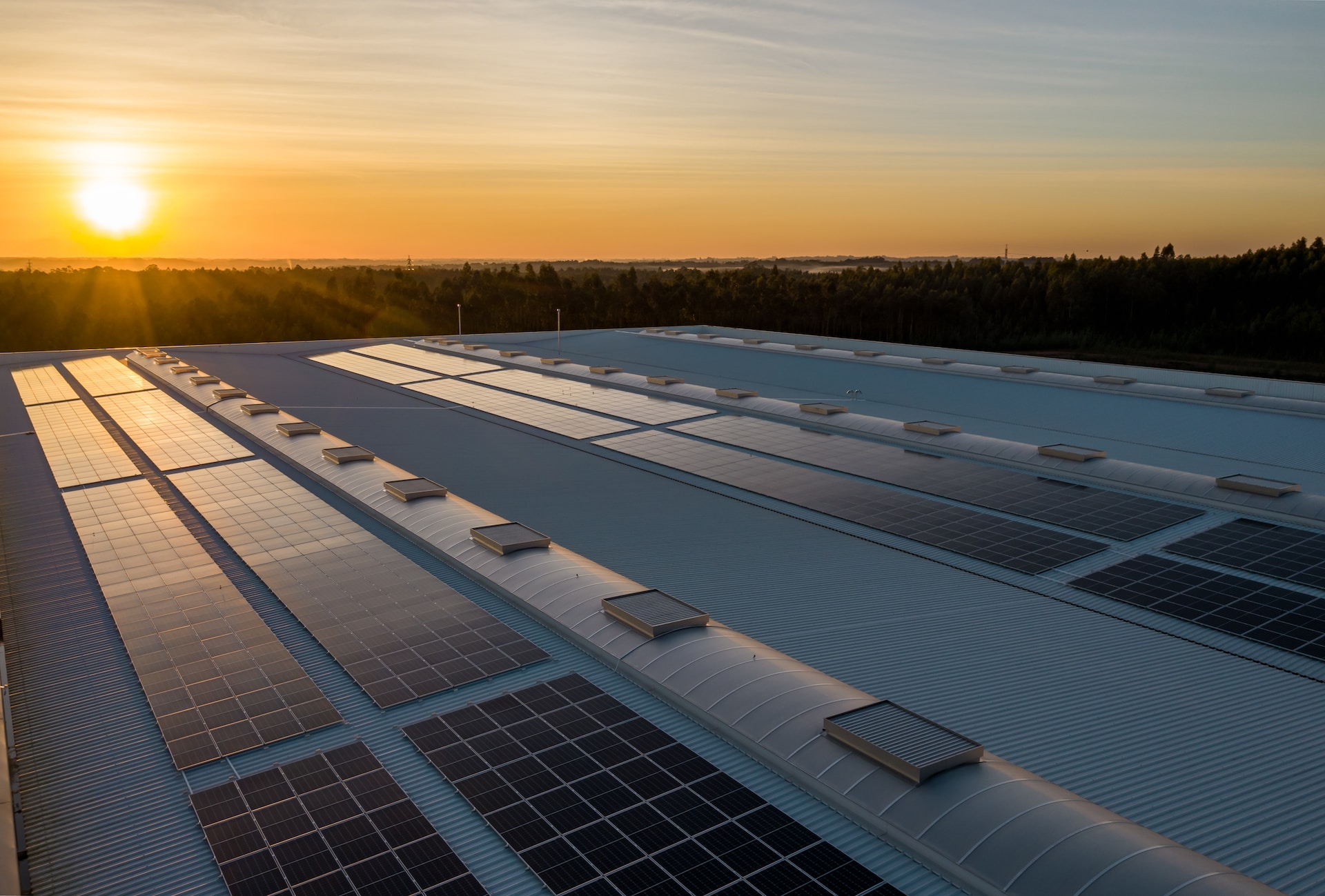
Credit: sustainablereview.com
Advantages Of Micro Inverters For Solar Panels
Solar installations can benefit from micro inverters, which simplify the process and cut installation costs by around 15%. Micro inverters also offer better durability and a longer lifespan compared to traditional central inverters. Elevate solar efficiency with micro inverters for increased performance and savings.
Improved Energy Production:
- Micro inverters allow each solar panel in a system to operate independently, maximizing energy production.
- By converting the direct current (DC) output of each panel into alternating current (AC) right at the source, micro inverters minimize power losses caused by shade, dust, or dirt on individual panels.
- This ensures that even if one panel is partially shaded or underperforming, the other panels can continue to generate electricity at their full potential.
Enhanced System Performance In Shaded Conditions:
- Unlike traditional string inverters that are affected by the performance of the entire string of panels, micro inverters provide system-wide shading tolerance.
- Each solar panel is equipped with its own micro inverter, meaning that shaded panels won’t significantly impact the performance of the rest of the system.
- This is especially beneficial for rooftops with nearby tall trees or buildings that cast shadows on the solar panels throughout the day.
Increased System Design Flexibility:
- Micro inverters offer greater flexibility in terms of system design and installation.
- Without the need for string sizing or specific panel configurations, each panel can be installed independently to achieve optimum performance.
- This eliminates the challenges of matching panel voltages and orientations that are often encountered with string inverters.
- It also makes it easier to expand the system in the future by simply adding additional solar panels with their own micro inverters.
Cost Benefits Of Micro Inverters
Solar installations utilizing micro inverters offer several cost benefits. These include simplified and quicker installation processes, which can result in a reduction of up to 15% in installation costs. Additionally, micro inverters offer enhanced durability and a longer lifespan, making them a cost-effective choice for solar panel systems.
Lower Installation Costs:
- Solar installations with micro-inverters are simpler and less time-consuming, resulting in lower installation costs.
- The use of micro-inverters eliminates the need for complex wiring configurations, reducing labor and material expenses.
- Micro-inverters allow for easy scalability, making it cost-effective to add more panels to an existing system.
- By maximizing the energy output of each individual panel, micro-inverters can reduce the overall number of panels needed for a given capacity, further reducing installation costs.
Reduced Maintenance And Monitoring Expenses:
- Micro-inverters offer advanced monitoring capabilities, allowing for real-time monitoring of each individual panel’s performance.
- This proactive monitoring helps identify and address any issues or inefficiencies promptly, reducing the need for costly maintenance and repairs.
- Unlike string inverters, micro-inverters isolate the performance of each panel, minimizing the impact of shading or malfunctions on the entire system.
- With micro-inverters, there is no single point of failure, ensuring that the system remains functional even if one or more panels experience issues.
Longer Lifespan And Better Durability:
- Micro-inverters are designed to handle the high demands of solar systems, resulting in a longer lifespan compared to traditional string inverters.
- They are built with robust materials that can withstand harsh weather conditions, ensuring durability and reliability over time.
- The individual nature of micro-inverters minimizes the risks of system-wide failures, prolonging the overall lifespan of the solar installation.
- With fewer components to maintain and replace, micro-inverters reduce the long-term maintenance costs associated with solar panel systems.
Micro-inverters offer several cost benefits when it comes to solar panel installations. They lower the overall installation costs, reduce ongoing maintenance and monitoring expenses, and provide a longer lifespan with better durability. Taking advantage of micro-inverters can help make solar energy more accessible and cost-effective for both residential and commercial applications.
Safety And Reliability Of Micro Inverters
Discover the benefits of micro inverters for elevating solar efficiency. With simpler installations, reduced costs, and improved safety, micro inverters offer increased reliability for solar panels. Switch to micro inverters to enhance your solar energy system.
Micro inverters offer several safety and reliability advantages compared to central inverters. Let’s explore these benefits:
Comparison With Central Inverters:
- Micro inverters are installed at the individual solar panel level, whereas central inverters are installed at a centralized location for the entire solar array.
- With micro inverters, each solar panel operates independently, reducing the risk of complete system shutdown due to issues with one panel or inverter.
- In contrast, central inverters are vulnerable to the performance fluctuations of the entire system, making them less fault-tolerant.
Improved Safety Features:
- Micro inverters are designed with built-in safety features, such as rapid shutdown capabilities, which allow the system to quickly shut off in case of emergencies or maintenance requirements.
- This feature enhances the safety of both the solar installation professionals and the homeowners.
- In addition, micro inverters eliminate the risk of high DC voltage in the system, as they convert the DC power generated by each panel into AC power right at the panel.
Higher Reliability And Fault-Tolerant Design:
- Micro inverters’ decentralized design makes the system more reliable and fault-tolerant.
- If one micro inverter malfunctions or experiences a fault, it only affects the performance of a single panel, rather than the entire array.
- This modular design ensures that the rest of the solar panels continue to operate at maximum efficiency.
- Furthermore, micro inverters have longer lifespans compared to central inverters, reducing the need for frequent maintenance and replacement.
Micro inverters offer enhanced safety and reliability for solar panel systems. Their decentralized design and improved safety features make them a preferred choice for homeowners and solar professionals alike.
Compatibility With Solar Panel Systems
Discover the advantages of micro inverters for solar panels, including simplified installation and reduced costs. These innovative devices ensure maximum efficiency and safety, making them an excellent choice for elevating solar energy efficiency.
Integration With Different Panel Types And Configurations:
- Micro inverters are compatible with various types of solar panels, including monocrystalline, polycrystalline, and thin-film panels.
- They can seamlessly integrate into different panel configurations, such as rooftop installations, ground-mounted arrays, and even building-integrated photovoltaics (BIPV).
- This compatibility allows for greater flexibility and options when designing and installing a solar power system.
Scalability For Future System Expansion:
- One of the significant advantages of micro inverters is their scalability, making them ideal for future system expansion.
- Unlike traditional string inverters that are limited by the capacity of the entire system, micro inverters operate independently for each solar panel.
- This means that additional panels can be easily added to the system without affecting the performance of the existing ones.
- Whether you want to expand your system to meet increased energy demands or take advantage of available roof space, micro inverters offer a solution that is both efficient and cost-effective.
Compatibility With Battery Storage Systems:
- Micro inverters are compatible with battery storage systems, enabling homeowners to store excess solar energy for later use.
- With a micro inverter-based system, the generated DC power can be converted to AC power and used directly or stored in batteries for use during periods of low sunlight or high energy demand.
- This compatibility helps maximize the self-consumption of solar energy and provides homeowners with greater energy independence.
- By coupling micro inverters with battery storage, you can create a reliable and resilient solar power system that can supply electricity even during grid outages or peak demand periods.
Micro inverters offer compatibility with various panel types and configurations, scalability for future system expansion, and compatibility with battery storage systems. These benefits make micro inverters a versatile and efficient choice for solar panel installations, enhancing the overall performance and reliability of the solar power system.
Installation And Maintenance Considerations
Micro inverters for solar panels offer numerous benefits, including simpler installations and reduced costs. They also provide better durability and longer lifespan compared to traditional central inverters. Experience elevated solar efficiency with the advantages of micro inverters.
Ease Of Installation And Reduced Labor Requirements
Micro inverters for solar panels offer several benefits when it comes to installation and reducing labor requirements:
- Simplified Installation: With micro inverters, the installation process becomes more straightforward and streamlined. Unlike traditional string inverters, micro inverters are installed on each individual solar panel, eliminating the need for a central inverter. This means that there is no complex wiring required between the panels and the inverter, making the overall installation process faster and more efficient.
- Flexibility in Panel Placement: Micro inverters allow for greater flexibility in panel placement. Because each solar panel has its own dedicated micro inverter, there is no longer a need to worry about panel orientation or shading issues. This means that solar panels can be installed in any orientation and at different angles, optimizing the energy production of each individual panel.
- Scalability: Another advantage of micro inverters is their scalability. With traditional string inverters, adding new solar panels to an existing system can be complex and costly. On the other hand, micro inverters allow for easy system expansion. Each new panel can simply be connected to an additional micro inverter, without the need to modify the existing wiring or inverter setup.
- Reduced Labor Costs: The installation of micro inverters requires less labor compared to traditional string inverters. Without the need for extensive wiring and the central inverter, the installation process becomes more straightforward and less time-consuming. This translates to reduced labor costs, making micro inverters a cost-effective solution for solar panel installations.
Monitoring And Maintenance Procedures
Micro inverters offer several advantages when it comes to monitoring and maintenance procedures for solar panels:
- Panel-Level Monitoring: One of the key benefits of micro inverters is the ability to monitor the performance of each individual solar panel. With traditional string inverters, any decrease in performance or failure of one panel could affect the entire array. However, with micro inverters, panel-level monitoring allows for early detection of any issues, enabling prompt maintenance and optimization of the system’s overall efficiency.
- Real-Time Data: Micro inverters provide real-time data on the performance of each panel. This information includes data such as voltage, current, and power output, allowing solar system owners to have a comprehensive understanding of their system’s performance. Real-time data is crucial for identifying any underperforming panels or potential issues, which can then be addressed promptly to ensure optimal system operation.
- Remote Monitoring: Another advantage of micro inverters is the ability to remotely monitor the solar system’s performance. Through advanced monitoring software, users can access real-time data and receive alerts in case of any system abnormalities. Remote monitoring allows for easy system management, regardless of the location, ensuring that any necessary maintenance or troubleshooting actions can be taken promptly.
Troubleshooting And Fault Detection
Micro inverters offer several features that simplify troubleshooting and fault detection processes for solar panel systems:
- Panel-Specific Fault Detection: Micro inverters enable panel-specific fault detection, which means that in case of any malfunction or performance issues, it becomes easier to pinpoint the exact panel that is causing the problem. This simplifies the troubleshooting process, as solar system owners and technicians can identify and address the issue with precision.
- Reliable Fault Detection Algorithms: Micro inverters utilize advanced algorithms to detect faults and abnormalities in the system. These algorithms are designed to analyze panel-level data and identify any fluctuations or deviations from the expected performance. With reliable fault detection algorithms, potential issues can be detected early on, allowing for timely maintenance and minimizing the impact on the overall system performance.
- Enhanced System Diagnostics: Due to the panel-level monitoring capabilities of micro inverters, system diagnostics become more precise and efficient. Any underperforming panels, faulty connections, or other issues can be identified quickly, enabling effective troubleshooting and resolution. Consequently, the downtime of the solar system is reduced, ensuring maximum energy generation and system efficiency.
Case Studies: Real-Life Examples Of Micro Inverter Success
Discover real-life examples of micro inverter success in our case studies. Explore the benefits of using micro inverters for solar panels, such as increased efficiency and simplified installation processes. Elevate your solar power system with this innovative technology.
Case Study 1: Residential Solar Installation With Micro Inverters
- Eliminates the need for complex wiring: In a residential solar installation, micro inverters allow each panel to operate independently, eliminating the need for complicated series wiring.
- Increased energy harvest: Micro inverters optimize energy production by reducing shading and panel mismatches, resulting in a higher overall energy yield from the solar panels.
- Enhanced system reliability: With micro inverters, the failure of one panel does not affect the performance of the entire system. This ensures that the residential solar installation continues to generate power even if there are issues with individual panels.
- Easy monitoring and maintenance: Micro inverters enable real-time monitoring of each panel’s performance, allowing homeowners to quickly identify and address any issues. This simplifies maintenance and ensures maximum system efficiency.
- Improved safety: Micro inverters provide added safety by minimizing the risk of electric shock during installation and maintenance. Unlike string inverters, micro inverters convert DC voltage to AC right at the panel, significantly reducing the voltage level.
- Scalability and flexibility: Residential solar installations can easily be expanded or modified with micro inverters. Adding or removing panels does not require major reconfigurations, making it a flexible and scalable solution for homeowners.
Case Study 2: Commercial Solar Project Incorporating Micro Inverters
- Customizable system design: Micro inverters offer flexibility in commercial solar projects by allowing for different panel orientations, placements, and multiple roof surfaces.
- Maximum energy output: Micro inverters optimize energy production in commercial installations by minimizing shading effects and panel performance differences. This ensures that the system generates the maximum amount of energy possible.
- Easy troubleshooting and maintenance: With micro inverters, it is easier to identify and troubleshoot any issues that may arise in a commercial solar project. Real-time monitoring capabilities allow for quick detection and resolution of problems, minimizing downtime.
- Improved safety: Micro inverters provide added safety by reducing the risk of high-voltage DC electrical shock. The conversion from DC to AC occurs at each individual panel, ensuring lower voltage levels throughout the system.
- Enhanced system reliability: Unlike traditional string inverters, micro inverters offer increased reliability in commercial solar projects. If one panel or inverter fails, the rest of the system continues to operate at optimal performance.
- Higher return on investment: The use of micro inverters in commercial solar projects can result in higher returns on investment due to increased energy production, improved system reliability, and simplified maintenance.
Case Study 3: Off-Grid Solar System With Micro Inverters
- Energy independence: Micro inverters play a crucial role in off-grid solar systems, allowing users to generate and use their own clean energy without relying on the traditional power grid.
- Optimized energy harvest: With micro inverters, off-grid solar systems can maximize energy production by optimizing each panel’s performance. This ensures that the system generates as much power as possible, even in challenging environmental conditions.
- Easy system expansion: Off-grid solar systems often require flexibility for future expansion. Micro inverters simplify system scalability by allowing for the addition of panels without the need for extensive reconfiguration.
- Enhanced fault tolerance: In off-grid systems, micro inverters offer improved fault tolerance by allowing each panel to operate independently. If one panel experiences issues, the rest of the system continues to generate power without interruptions.
- Remote monitoring and control: Micro inverters enable remote monitoring and control of off-grid solar systems, providing users with real-time insights into system performance and energy production. This allows for prompt troubleshooting and maintenance, ensuring optimal system efficiency.
- Longer lifespan: Off-grid solar systems using micro inverters tend to have longer lifespans due to the enhanced durability and reliability of the individual inverters. This reduces the need for frequent replacements or repairs, resulting in cost savings for off-grid system owners.
Frequently Asked Questions On Elevating Solar Efficiency:
What Are The Benefits Of Micro Inverter Solar Panels?
Micro inverter solar panels have several benefits. They offer simpler and quicker installation, leading to a 15% reduction in installation costs. Additionally, they have better durability and a longer lifespan compared to other types of inverters. Micro inverters also provide maximum efficiency of 95%, similar to central inverters.
However, they are considered safer as they convert electricity to AC at the panel level, reducing the risk of electrical accidents. One downside of micro inverters is the higher cost. They require separate installation for each solar panel, leading to increased upfront costs.
Maintenance and replacement costs are also higher due to the individual nature of micro inverters. Despite the higher cost, micro inverter solar panels offer benefits in terms of simplicity, safety, and efficiency.
Are Solar Panels With Micro Inverters Better?
Micro inverters offer several benefits. They simplify solar installations, reducing installation costs by about 15%. They also have a longer lifespan and are more durable compared to other types of inverters. Additionally, micro inverters have a maximum efficiency of 95%, similar to central inverters.
Another advantage of micro inverters is their safety. They convert electricity to AC at the panel level, making them safer than central inverters. However, one downside of micro inverters is their higher cost. Each panel requires a separate micro inverter, which adds to the initial installation cost.
Moreover, maintenance and replacement costs may also be higher since each micro inverter needs to be individually serviced. Despite the higher cost, the benefits of micro inverters in terms of installation simplicity, efficiency, and safety make them a favorable choice for many solar panel systems.
What Is The Downside Of Microinverters?
Microinverters can be more expensive to install compared to other types of inverters because they require separate installation on each solar panel. This means higher upfront costs for the system. Additionally, since each panel has its own microinverter, there is a higher likelihood of individual component failure, which could lead to higher maintenance and replacement costs over time.
This can make microinverters less cost-effective in the long run. However, it is important to note that microinverters offer advantages such as better performance in shaded areas, monitoring capabilities for each panel, and increased safety. Ultimately, the decision to use microinverters will depend on factors such as budget, shading conditions, and the desired level of control and monitoring for the solar installation.
What Are The Benefits Of Enphase Micro Inverter?
Micro inverters offer several benefits for solar panels. Firstly, they simplify the installation process and reduce costs by around 15%. Additionally, micro inverters have a longer lifespan and offer better durability compared to other types of inverters. Micro inverters also have a high maximum efficiency of 95%, similar to central inverters.
They are considered safer as they convert electricity to AC at the panel level, unlike central inverters. Overall, the benefits of micro inverters include simplified installation, cost saving, improved durability, longer lifespan, high efficiency, and enhanced safety. These advantages make micro inverters a popular choice for solar panel installations.
Conclusion
Veral micro inverters being installed for each solar panel. Additionally, micro inverters are more prone to failure compared to central inverters, which can result in greater maintenance requirements. However, despite these drawbacks, the benefits of micro inverters cannot be overlooked.
They offer increased solar panel efficiency by maximizing power generation from each individual panel. Micro inverters also provide improved safety, as they convert electricity to AC at the panel level, reducing the risk of electric shock and fire hazards. Furthermore, the simplicity and flexibility of micro inverter installations make them an attractive option for residential and commercial solar projects alike.
With their enhanced efficiency, safety features, and ease of installation, it is clear that micro inverters offer numerous benefits, making them a valuable addition to any solar panel system.

